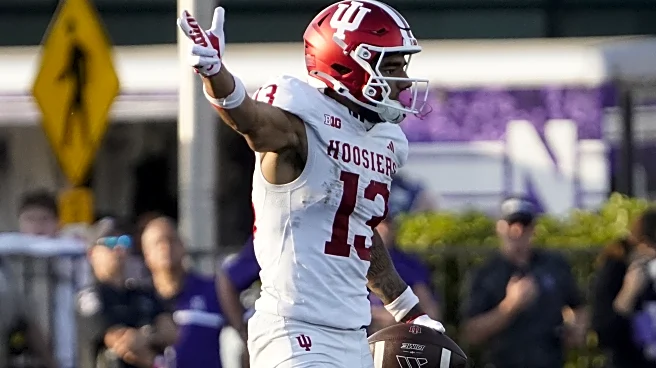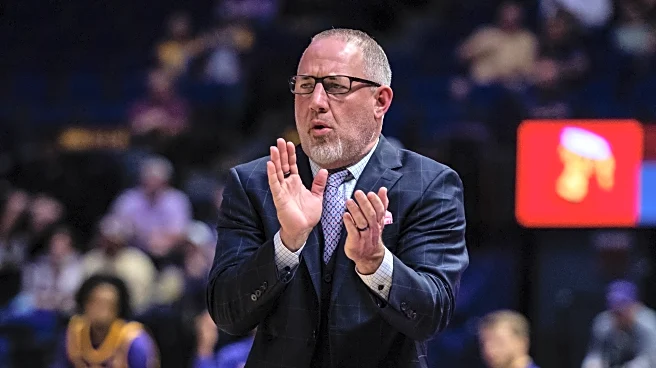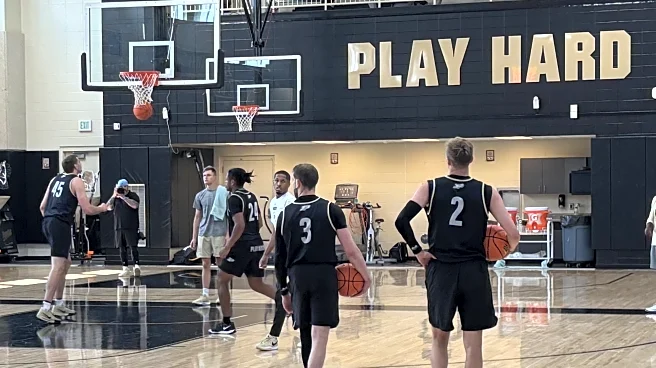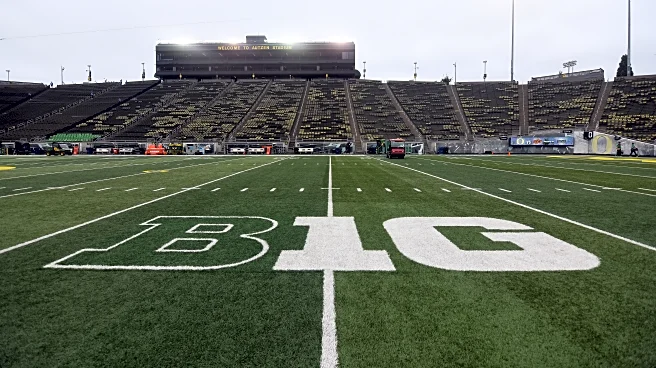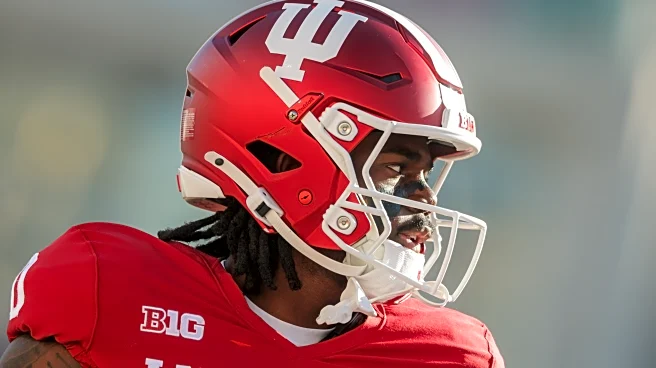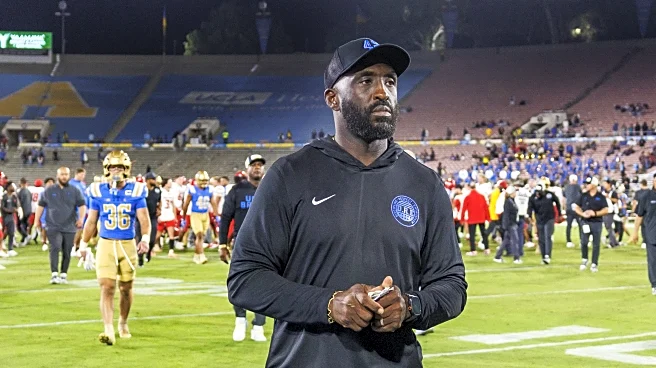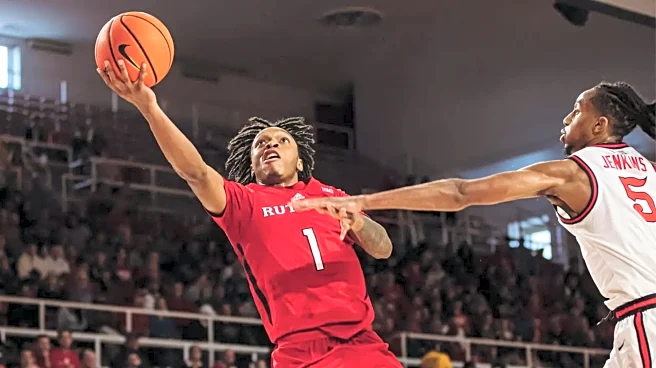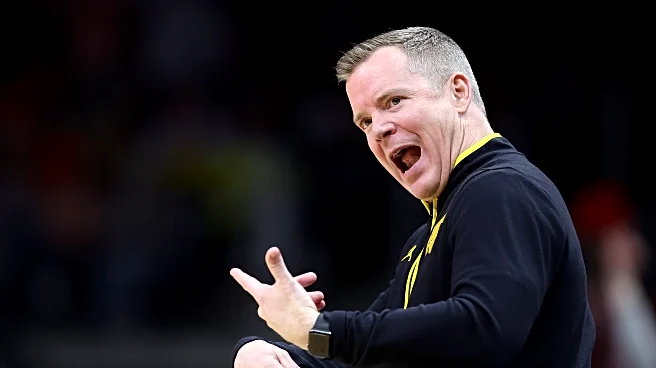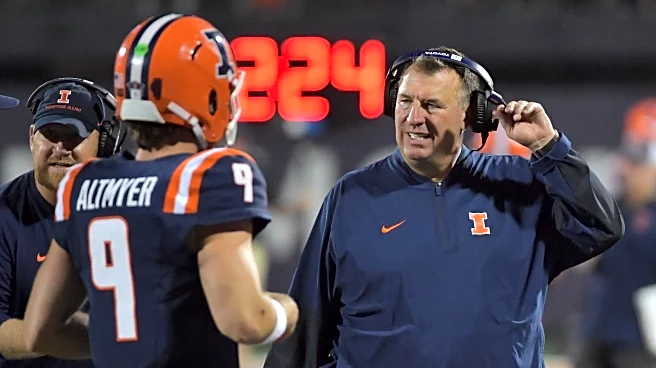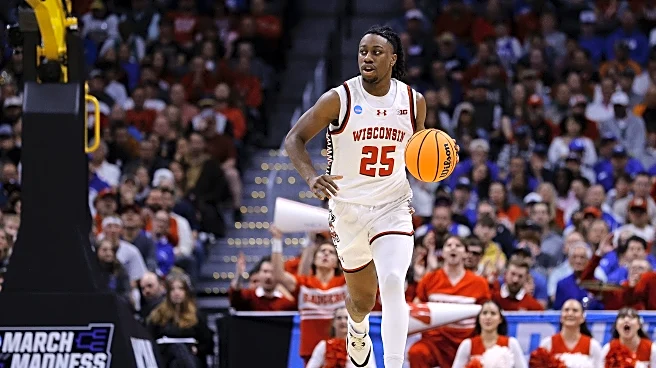What's Happening?
The Indiana Hoosiers, ranked No. 19, are set to host No. 9 Illinois in a significant Big Ten college football game. Indiana has achieved a 3-0 record, overcoming initial challenges against Old Dominion. Quarterback Fernando Mendoza, a transfer from California, has been instrumental in their success, throwing nine touchdowns without interceptions in his last two games. Illinois, also 3-0, is experiencing its highest AP poll ranking since 2001, driven by senior quarterback Luke Altmyer, who has thrown eight touchdowns and no interceptions. The game will be broadcast nationally on NBC and streamed on Peacock and Fubo, with kickoff scheduled for 7:30 p.m. ET at Memorial Stadium in Bloomington, Indiana.
Why It's Important?
This matchup is crucial for both teams as they aim for a College Football Playoff berth. Indiana's strong start and Mendoza's performance have positioned them as contenders, while Illinois seeks to maintain its high ranking and continue its offensive momentum. The outcome could significantly impact the Big Ten standings and the national rankings, influencing playoff considerations. Fans and analysts will closely watch the quarterbacks' performances, as both have shown exceptional skill and leadership. The game also highlights the competitive nature of the Big Ten conference, known for its strong football programs.
What's Next?
Following this game, Indiana will face Iowa, Oregon, Michigan State, and UCLA, while Illinois will play USC, Purdue, Ohio State, and Washington. Both teams have challenging schedules ahead, which will test their resilience and adaptability. The results of these games will further shape their playoff prospects and conference standings. Stakeholders, including fans, coaches, and players, will be keenly interested in the teams' strategies and adjustments as they navigate the season.
Beyond the Headlines
The game underscores the importance of quarterback transfers in college football, as both Mendoza and Altmyer have significantly impacted their teams. This trend reflects broader shifts in college sports, where player mobility can alter team dynamics and competitive balance. Additionally, the media coverage and streaming options highlight the evolving landscape of sports broadcasting, offering fans multiple ways to engage with live events.

